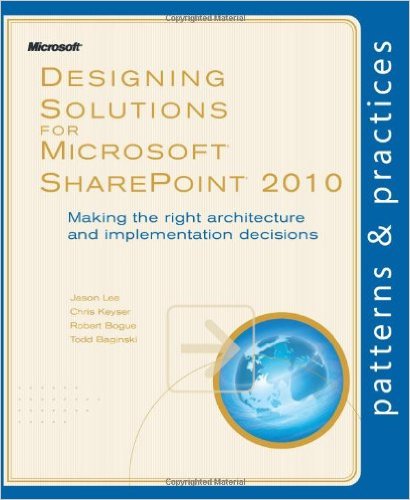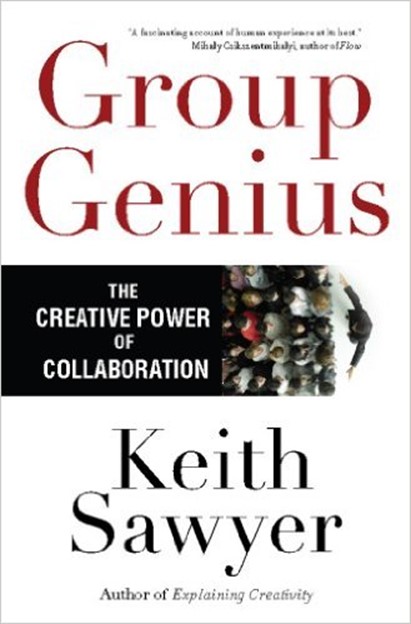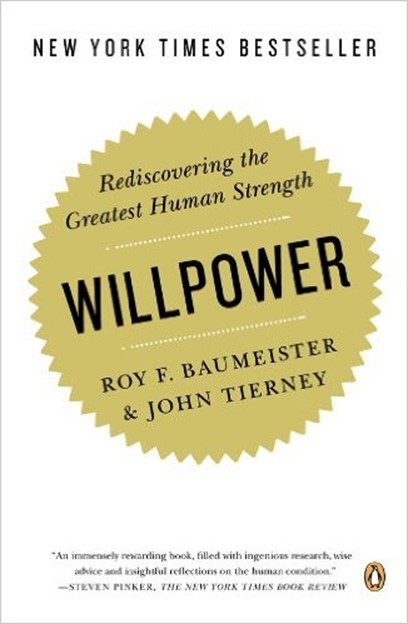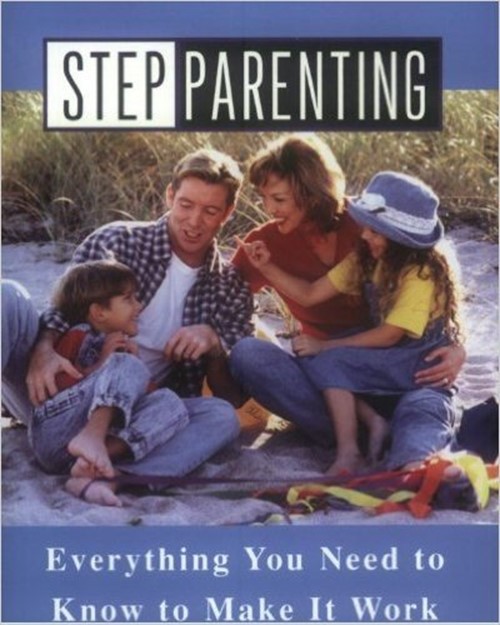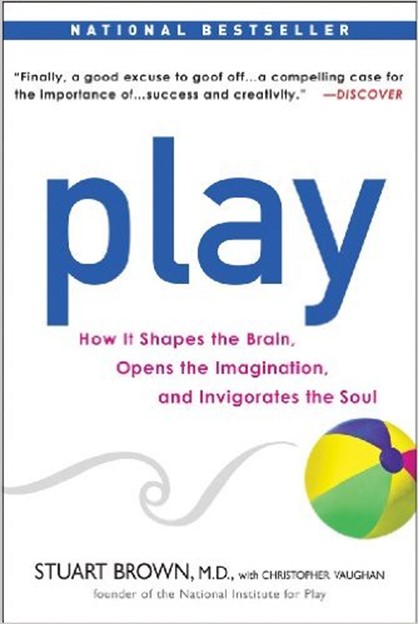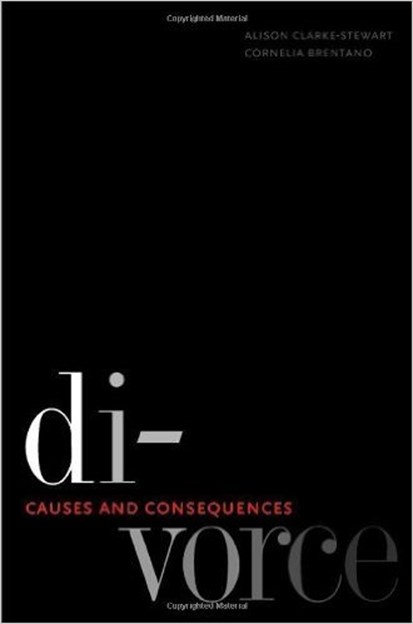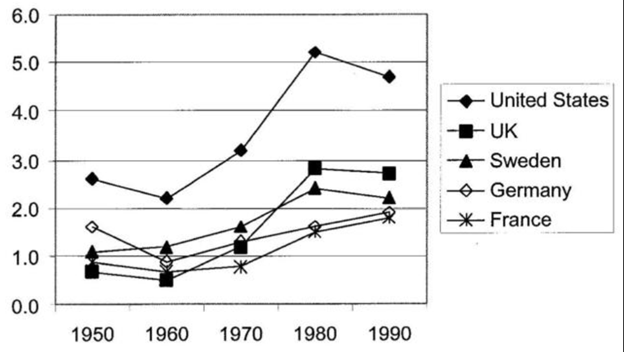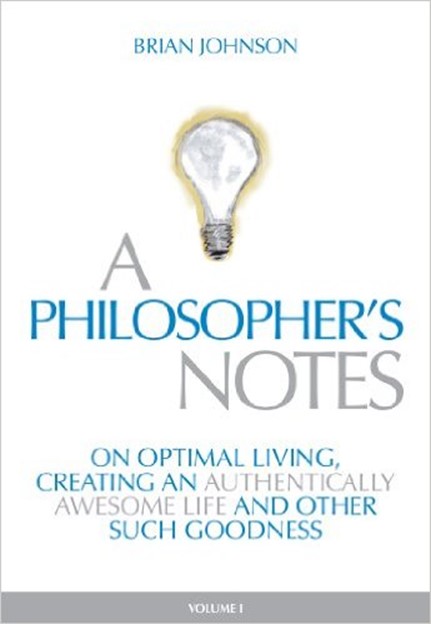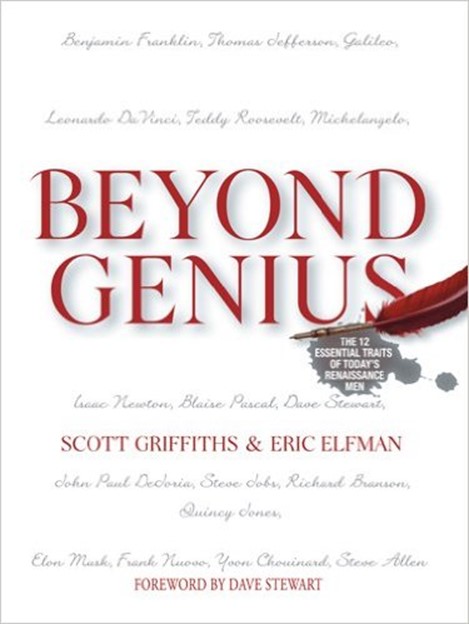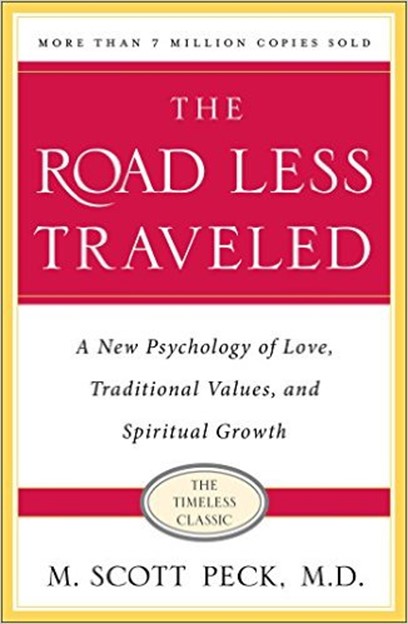Robert Bogue
February 8, 2016
No Comments
If you were to ask people about their biggest failings, the one thing that if they could get a handle on their lives would be better, what would it be? It might be that solving a lack of willpower might top the list of failings – as it does in research on the subject. We’re all subject to times when our willpower is weak. However, what is willpower and how do we build it up for the times we need it. That’s the subject and goal of the book Willpower: Rediscovering the Greatest Human Strength.
Defining Willpower
Often people will describe their lack of willpower from the perspective of eating more than we should. However, this is just one dimension of willpower. There are, however, four different categories for willpower which are:
- Control of thoughts – The ability to focus our attention on appropriate or desirable activities or the ability to stay on a single train of thought.
- Control of emotions – The ability to regulate emotions so they don’t become excessive or overwhelming
- Impulse control – The ability to resist temptations
- Performance control – The ability to manage speed, accuracy, and completeness to complete the task at hand.
In addition to these categories, power can be broken into its magnitude and stamina. That is can you avoid the most alluring desert or not or can you resist it for the entire evening. So willpower isn’t just one thing as we like to simplify it into. The fact is that you may have great amounts of willpower in one area, and little or none in another area.
The difference between good willpower and those with little willpower seems to have more to do with the situations and habits they create for themselves rather than a natural wellspring of willpower.
Stacking the Deck
Sitting at a table with your friends you reach over and grab another chip from the bowl which sits just within comfortable reach and within your peripheral vision. The conversation drifts between the game of cards, politics, and “last week’s goings on.” All the while you’re silently munching on chips. When you wake up the next morning and weigh yourself you discover – much to your horror — how many chips you really did eat.
The challenges you faced here weren’t high-stress or a “bad day at work.” The situation was setup to weaken your willpower. You were distracted by stimulating conversation (so you weren’t paying attention to your consumption.) The logistics were such that your subconscious was fed a constant stream of data about the availability of the snack. Your ease of reach could make the acquisition of the chips transparent.
In short the cards were stacked against you. The situation itself required a huge amount of willpower to resist and engaging conversation with friends was more than enough distraction to prevent you from summoning up the willpower that you normally have.
Willpower Exhaustion
When muscles get tired and have really been torn up by the process of their exertion and are quite literally unable to apply as much force as when they started. Slowly the more you exert yourself the more damage is done to the muscles. In the case of muscles, like willpower as we’ll see in a moment, after some time and recovery you’ll have a greater capacity. When your body has a chance to rest after physical exertion it goes about the process of rebuilding the muscles which were torn up and in a desire to prevent damage again they’re rebuilt slightly better and slightly stronger. This is how over a long period of concerted exercise body builders transform their bodies into muscular machines.
While building up their muscles in a pattern of strain and recovery, they quite literally can’t do as much at the end of a strenuous workout as they could do at the start. Their physical ability has been reduced – or in some cases exhausted.
Willpower works much like our physical muscles in that as we expend it, we’re expending some of a fixed amount of capacity. With our physical muscles it doesn’t matter whether we’re lifting weights or walking up the stairs, we’re consuming from the same pool of resources. With willpower it doesn’t matter if we’re making decisions or resisting chocolate cake, we’re drawing from the same pool of resources.
That’s why it’s important to recognize that we can exhaust our willpower. With rest and self-care, it will recover, but for a time we’re completely unable to muster any additional self-control. In 12 step programs they speak of the risky time of HALT which is an acronym for: hungry, angry, lonely, or tired. As it turns out these are all conditions that require a great deal of willpower and can send us hurtling towards willpower exhaustion and in the case of an addict, tumbling back into the addiction.
On the one hand, it’s important to exercise your willpower “muscles” on the other hand it’s important to know how to exercise them in ways that improve your chances for success. Part of that is managing your situation and part of that is building enduring habits. However, before you can build the right habits, you have to know how willpower is fed.
Blood Glucose
Many moons ago I had the privilege of working on a study which leveraged technology to assist patients with diabetes. This was my introduction to blood glucose – and the things that go wrong when your blood glucose isn’t carefully managed. Patients with diabetes are unable to properly regulate their blood sugar on their own. Their body either doesn’t produce insulin to keep the blood glucose low, or the body resists the insulin to such a degree that it can’t produce enough. (Technically there is one other option one’s liver can be converting too much fat into blood glucose but that’s rarer.) The result of too much blood glucose is that the patient’s blood becomes more like a syrup and this causes a whole plethora of complications from damaging the retina to increasing the work the heart must do and loss of neural sensation from the extremities.
In the management of this disease sometimes patients managing their own care and overzealous physicians create the opposite problem that is there’s not enough blood glucose for the body to function. The brain as the powerhouse of the body starts shutting down – like rolling brownouts in the power grid – causing some truly whacky responses. However, the blood glucose problem doesn’t just effect patients with diabetes. Low blood sugar is common in adults – just not as severe. The result for regular adults is that their body – and its largest power consumer, the brain – have to start conserving energy. As we learned in The Rise of Superman, while the brain’s normal energy consumption is the same, it can shut down places where energy is being consumed in order to prioritize other systems. When we’re depleted of blood glucose the brain shuts down the anterior cingulate cortex which is the center of self-control (and manager of the self in general). So when our blood glucose is low, we have less willpower.
One of the factors that leads to low blood glucose is high consumption of (blood glucose?) which is caused when we exercise willpower. So we quite literally run out of the body’s energy source – at least temporarily – when we’re using our willpower.
Situational Management
Consider the scenario that we introduced above where you’re snacking unconsciously on things which are within eye sight and within reach. What if we moved the bowl across the room or out of our peripheral vision? We’d eat less. If we want to simply replace the fattening snack with a healthy alternative, the odds are that we’ll eat that instead. (In smaller quantities, generally.) By manipulating the situation, we manipulate how much willpower we must direct towards our eating habits – and given the limited nature of our willpower, conserving it can be a good thing. (I spoke of a longer view of situational management in my post on Trust => Vulnerability => Intimacy.)
Sometimes increasing willpower is creating situations where it’s not needed and is therefore not consumed. If you’re an alcoholic, then perhaps your first career choice may not be a bartender. With easy access to the addictive substance you fight, you’re bound to find times when your willpower is waning.
In Switch and The Happiness Hypothesis we were introduced to the model of the rider, the elephant, and the path. Situational management is all about managing the path. What’s going to be the default behavior when neither your reason nor your emotions are exerting control? The other component of the path is, however, creating the right habits to start with.
Creating Habits
The best way to use willpower, it turns out, is to use willpower to develop habits which then eliminate the need for willpower. If you get up each day and exercise – then you’ll get up each day and exercise without the willpower fight that accompanies the decision to exercise or not.
The precursor to a habit sometimes is the introduction of the “bright line.” That is the line you’re unwilling to cross. Jack Canfield, author of The Success Principles, says “99% is a bitch. 100% is a breeze.” That is once you’ve decided that you’re never going to do something, you need not consider the option again and therefore you don’t need to consume willpower to decide.
Once you’ve made the bright line decision, you can create habits around behaviors that you do want. In 12 step program circles there’s an idea of a stoplight. A stoplight has red, yellow, and green lights. The activities we do on a given day fall into three categories. Red activities are the things that we don’t want in our lives. Be it drinking, smoking, overeating, or something else these are the things that we know are bad for us and that we’ve decided (with our rational rider) that we’re not going to do. Yellow are those activities which aren’t bad in and of themselves but they sometimes lead to the red behaviors that we want to avoid. We avoid yellow behaviors not because they are inherently bad but because of where they can lead. Green activities are life giving to us. They renew us, enrich us, or make our lives better. We want to create more of these activities in our lives – these are the activities that we want to turn into habits.
Using our precious willpower to create habits around our green light activities isn’t easy – but it frees us up to use our willpower in other ways later. It eliminates the need to fight to do the green light activities while at the same time refreshing and renewing us and there by building our willpower.
Habits, according to The One Thing, take on average 66 days to form. Thus successful people focus on the development of one habit for two or three months and once that habit is formed and solidified they work on the next habit. John Kotter when speaking of organizational change in Leading Change and The Heart of Change
cautions for the need to reinforce change in the organization – the same is true of habits, they need to be reinforced. Benjamin Franklin was someone who was considered to have well-worn habits and to be a man of great willpower (except when it came to women) and even he admitted that building his habits – and supporting his virtues – was a life-long endeavor.
Building Willpower
I first encountered a living statue while in Las Vegas for a conference. I was walking through Caesar’s Palace and amongst the statues were sometimes people who were performing by not moving. Much like the Buckingham Palace guards they have to choose not to react to the people around them. (Excepting in the case of the living statues for those who choose to leave them a tip.) Willpower speaks of Amanda Palmer who brought the European tradition to the United States and more specifically to Harvard Square.
Palmer would stand on a box for hours at a time fighting the urge to scratch her nose or do any sort of physical movement. In the process she was demonstrating and developing her willpower. She would come home from her performances absolutely exhausted though she had barely moved. However, slowly and consistently she’d leverage the willpower she had and through it’s consistent use develop it further.
David Blaine is also profiled for his feats of endurance. Interestingly, and surprisingly, despite the ability to marshal his willpower for amazing feats, David Blane without the push of public eyes admits to not exercising willpower. Though he’s developed a set of mental tricks that he can use both to develop his willpower over the long term and the ability to marshal out the capacity he does have, he chooses not to exercise it every day – or in every part of his life. Instead when he’s preparing for a new stunt, he’s creating little goals and achieving them. He’s using repetition and practice to change little things over and over again until the momentum of his changes seem spectacular and unreachable by others.
Not Using Willpower
If willpower is an expendable resource perhaps the answer isn’t to build willpower but to stop using it all together – without the consequences of succumbing to temptations and lack of self-control. Creating “bright lines” and establishing habits are big and long term ways to conserve willpower by making decisions ahead of time about how you’ll behave. They’re in fact powerful examples of the strategy of precommitment.
In Greek mythology Odysseus had his shipmates tie him to the mast with orders to not listen to his cries to be set free or to change course while they were passing an island which was reportedly inhabited by sirens. By making it impossible for him to make a decision concerning his fate or the fate of his men he had precommitted to a course of action and saved himself the agonizing struggle between his desires and his willpower.
Another variation of this strategy is to make your decisions public. It’s easy to rationalize a private decision (See Change or Die for the major and minor defenses of our ego which include the tools necessary to distort reality.) Twelve step programs advocate accountability partners whom you agree to discuss your falters with. David Blane’s approach to making his willpower public is the extreme. Whether being encased in a block of ice or suspended above people in a glass box, Blaine’s demonstrations of willpower were excessively public – and therefore are great examples of how making your use of willpower a public matter can be a way to provide additional support and leverage to the willpower you have.
Seeing the Future
One of the common characteristics of people who are described as having little willpower is their focus on immediate gratification. They’ll take higher risk for lower reward than successful people with more willpower. That is success seems to be associated with the ability to see the future.
Mischel’s famous marshmallow test has come up before in Emotional Intelligence (and other books), the idea of delaying gratification being powerful isn’t new. However, what is new is that people who are considered to be of greater willpower (those with higher earnings) seem to set their sights much further in the future. They’re not looking an hour or two into the future, they’re looking years down the road. This vision for what they want in the future and the willingness to make small continuous decisions towards that goal seems to matter.
So while folks with a great deal of willpower can’t literally see the future, they certainly do envision it more often and more vividly.
Slow and Steady Wins the Race
The fable of the tortoise and the hare is well known. The hare is capable of easily outrunning the tortoise in short bursts of fury. The tortoise, however, has learned through years of being outrun in the short term that his strength lies in perseverance. The tortoise knows that as long as he continues towards his goal – no matter how slowly – he’ll eventually get there. The hare with natural speed knows that he doesn’t have to try. He can afford to be lazy and lazy he becomes.
Successful people are people who have decided to be tortoises – committed to making slow steady progress over the long term to develop their willpower, create the right habits, and leave themselves in the right situations for success. There’s no quick fix or one-time treatment to magically improve willpower. It takes hard work over a long period of time to create the kind of future that includes a large source of willpower and the need to not have to use it.
Short and Long Term Goals
You’ve undoubtedly heard the advice to plan for success. You’ve seen the value of planning instilled by numerous teachers and leaders over the years. However, as you dive into creativity and innovation you begin to realize that most innovation didn’t have a plan. Whether it’s the random idea or taking the random idea and making it real sometimes “The best laid plans of mice and men often go astray” according to Robert Burns. So what’s the real story on planning and setting goals?
First, goals presuppose that you can know what is best in the future by looking at what you know now. Daniel Kahnman in Thinking: Fast and Slow described the planning fallacy by explaining that they “describe plans and forecasts that are unrealistically close to best-case scenarios.” Here the planning fallacy takes on additional character. It also refers to the mistaken belief that you know today everything you need to know. Whether it’s Helmuth von Moltke’s admonishment that “no plan survives contact with the enemy” or something more mundane than the art of war great men (and women) recognized the need to adapt. (Some examples of extraordinary men are in Extraordinary Minds.)
Jim Collins in Good to Great speaks of the Stockdale Paradox where leaders must hold onto their visions while constantly being confronted with reality. In other words accepting that the world is as it is, not as we want it to be. Bob Pozen admits in his book Extreme Productivity that even though he works hard and plans that his life has often taken unexpected turns that made his old plans obsolete. He had to adapt to the situation he was in and reset his goals and aspirations to match his circumstances.
At the same time, even if you don’t subscribe to Napoleon Hill’s Think and Grow Rich strategy or The Secret, there is something to planning. There’s something to having aspirational goals and a fixed endpoint that you set your sights on. It allows you to weather the momentary setbacks without wavering in your belief that you’ll reach the end goal. It allows you to accept the undercurrents pulling you – temporarily – from your goal. By having the endpoint in mind you have a frame of reference with which to recalibrate your efforts.
From a willpower perspective then, is it better to plan – or not plan? As it turns out the answer is both. The development of strategic goals is good. Knowing where you want to go greatly improves your odds of getting there. The impact of long term goals on willpower seems negligible. However, setting too many rigid short term goals creates an internal conflict between what you said you would get done and what you actually got done which depletes willpower and makes it hard to get done what you really want. More than that it sets you up for a cycle of guilt and shame which further depletes your mental resources. (See Daring Greatly for more on guilt and shame.)
Too much focus on short term goals may also focus us too much on the things that we’re not getting done. Rather than silently fading into the background and being forgotten the short term goals remind us of our unfinished business.
Unfinished Business
Have you ever had a song “stuck in your head?” Of course you have, we all have. Why does it happen and what can we do about it? It turns out our brains don’t like unfinished business that we can’t wrap a neat bow around. When you hear half of a song because you get out of your car or you’re interrupted by a phone call your subconscious is trying to finish the song. Since most of us can never finish the song from our memory and without further interruption it’s stuck in our head.
This is an example of what is called the Zeigarnik effect. That is our propensity to want to finish our business. One interesting trick for addressing this is, however, to simply create a plan to resolve the unfinished business later. It seems like our brains can’t tell the difference between planning to resolve something and having actually resolve it. As a result we can create a to-do list with the item on the list and then move effortlessly through our next task without the nagging song in our head or the thought that intrudes on our reading.
Weight Loss and Management
We started with the idea that most people consider willpower in the context of eating and dieting. Though this is a narrow application of willpower it is the one that most people admit to struggling with. As it turns out, that makes a lot of sense.
Consider our conversation about blood glucose above. Our bodies know that they need blood glucose to survive and when it begins to drop we’re naturally signaled to seek out sources of food. In the process the portions of our brain which are the sources of willpower are shut down to conserve energy. The net result is that the time when we most need willpower to prevent us from overeating is the time when we least have it available.
We’re further challenged in that avoiding a bar is easy to do. Since food is required for life, we can’t exactly avoid all food. So as it turns out the greatest test of willpower may be maintaining our weight. Perhaps you can pick up some hints from Willpower.
